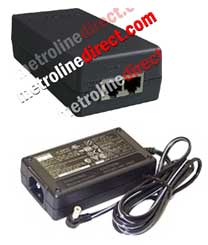|  | 
| What is Power over Ethernet (PoE)? |
|
|
| Traditional standards of telephone
power |
|
When using a residential telephone line, a phone
still functions in the event of a power outage. The reason is that the phone
company sends low voltage power over the phone line. This power is separate
from the electric company’s network, so that even if the power goes out, the
phone will still function. Business telephone systems
power analog and digital telephone extensions in the same way. Manufacturers
of these systems provide standards for sending low voltage power through
digital and analog extension ports. This allows the extensions to have
features such as backlit displays, general functioning, and ringing. In some
cases, consoles with large displays or telephones with adjuncts like
speakerphones also require a separate power supply. However, the majority of
extensions use direct line power. |
| |
| IP phones and the history of PoE |
| IP telephones are connected to
your data network and receive power differently. Because Ethernet wiring
predates IP telephony, cabling standards never included requirements for
directly powering devices like IP phones. The first IP telephones that were
released came with external power supplies. Because businesses typically
deploy more phones than data equipment, provisions for power outlets at each
workstation were required. This proved to be more difficult than traditional
digital and analog phone installations which simply involved plugging the
phone into the jack.
In order to eliminate local power supply
requirements for IP phones, Cisco introduced a proprietary standard in March
2000 (Cisco Inline Power) to send power over Ethernet wiring. This
innovation received recognition industry-wide and began a movement to
standardize power over Ethernet (PoE) for multi-vendor interoperability.
The Institute of Electrical and
Electronics Engineers (IEEE), one of the world’s leading technical
professional societies, ratified the 802.3af Power over Ethernet
standard in June of 2003. It describes a system to pass electrical power
safely, along with data, on Ethernet cabling. The 802.3af PoE
standard allows |
| IP Phone External
Power Supplies |
 |
| The Avaya 1151D1 and
Cisco Power Cube are commonly used to power IP phones where PoE is
not available. |
|
|
|
manufacturers of
network hardware and endpoint devices to produce switches, IP telephones,
wireless access points, and IP cameras with standardized PoE support.
Consequently, proprietary forms of power over Ethernet are now obsolete.
Today, most IP phones support both 802.3af
PoE and external power supplies. If a company has yet to deploy switches
supporting PoE, then they can still use power supplies for their IP phones.
|
|
|